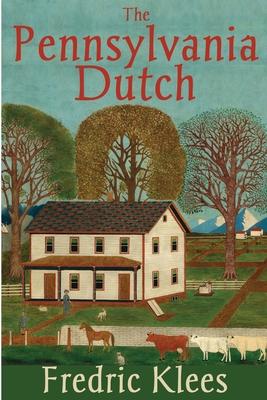Fredric Klees' The Pennsylvania Dutch is the best and most inclusive volume with an over-all approach to its subject. "I have tried," he says, "to make this book a comprehensive treatment of the Pennsylvania Dutch in which everything was touched on and nothing ignored."
It is a purpose achieved, on the whole, in a book of six parts ("Religion," "The Past," "By the Sweat of Their Brow," "The Country and the People," "Folkways," and "The Arts") with thirty-two chapters plus "A Forward Glance" and "Epilogue," all enhanced by the author's thirty-three typical pen-and-ink drawings.
Mr. Klees presents his own people in terms of their origin and background; history, struggles, and experience in America during war and peace; contributions to agriculture, industry, and art; beliefs, superstitions, and other folklore; and characteristics, dialect, place names, costumes, holidays, recreations, and foods. His intimate knowledge of the field covers the whole gamut of Pennsylvania Dutch life and adorns the religious, social, and political aspects with new facts and views.
In a scintillating style, with an occasional touch of humor, he paints a forceful but honest picture of the Pennsylvania Dutch, which he also fits into the general life of state and nation. Here is not just another book about the Pennsylvania Dutch. The reader will feel the full impact of these people upon the past and the present.
He will learn first about the Mennonites, the Amish, and the other "plain people," to whom the outsider turns at the mention of the term. Next he will meet the "church people" (Lutheran and Reformed), Moravians, and others, forming the large majority and not recognizable by their dress. Then he will come upon the hotbed of religions, the curious and fanatical communal groups. It is a logical approach when one considers the vital r6le of religion in the lives of our ancestors. The reader sees them across the broad Atlantic, only to face new hardships in a wilderness of war and Indians. He watches the new Americans conquer "By the Sweat of Their Brow"; till the soil; build forge and mill, also wagon road, canal, and railroad, into the "Dutch Country." How they lived and felt, a veritable biography of a people from cradle to tombstone, unfolds for the reader.
